Satpula is a Water Harvesting Dam built along the eastern wall of Jahanpanah by Sultan Muhammad bin Tughlaq in the year 727 AH (1326 AD).
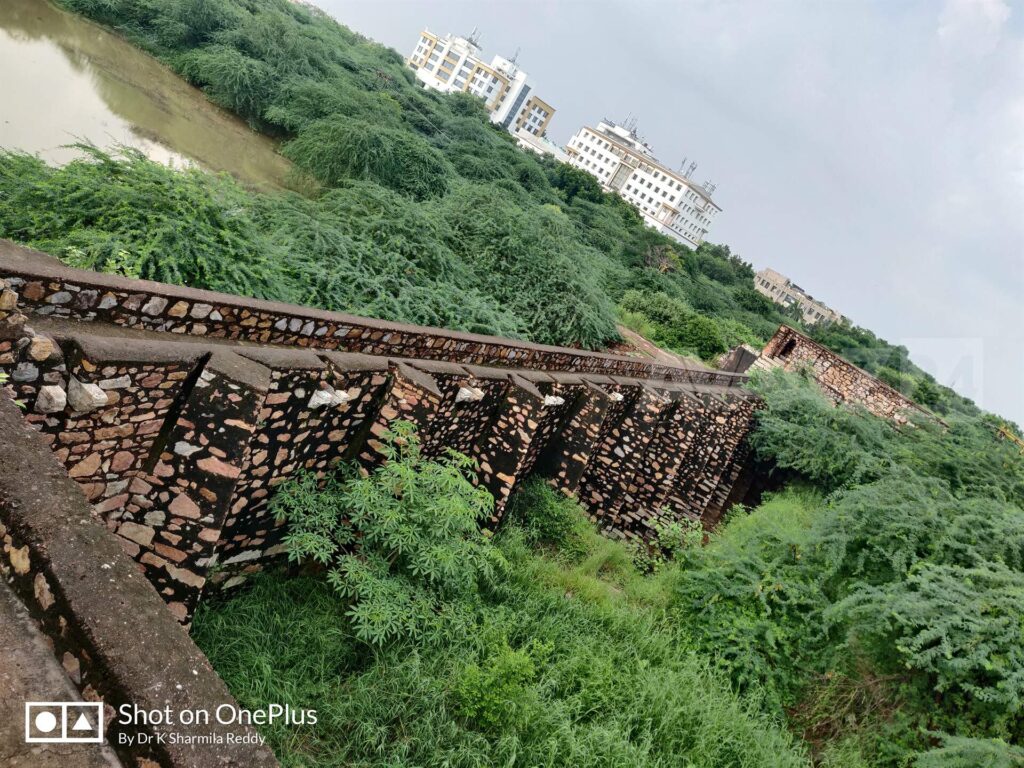
It is located about 800 m east of Khirki Mosque.
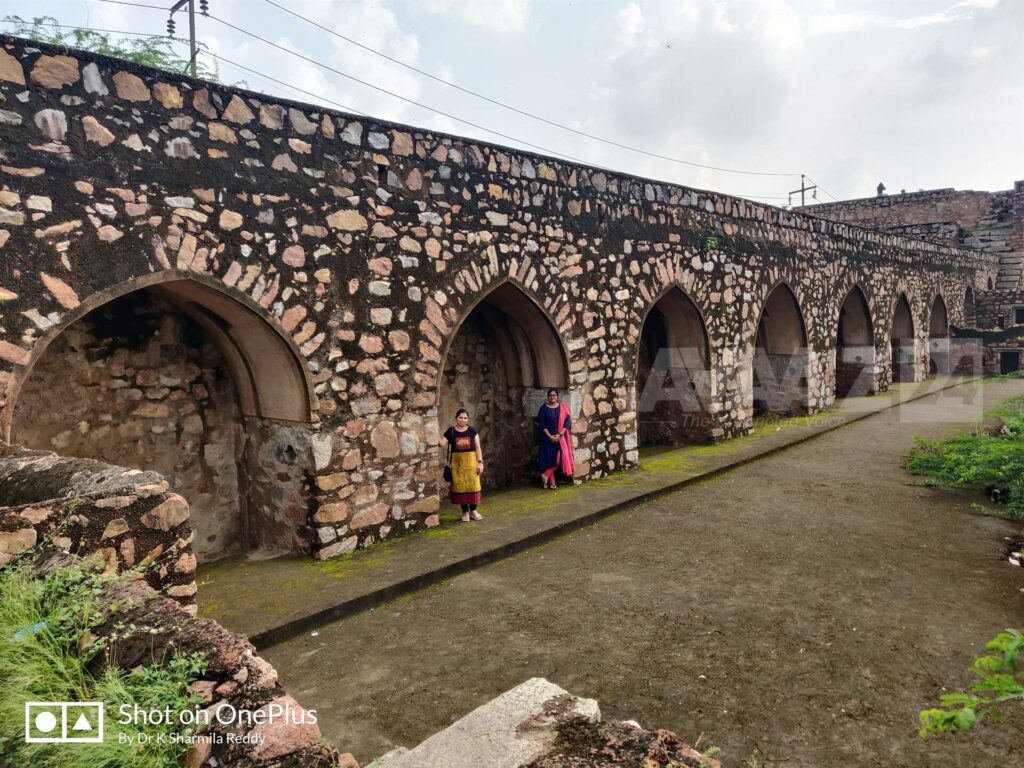
Concept of “Satpula”
Satpula means Bridge of Seven Piers. [”Sath” means seven and “Pula” means bridge]
It is a unique structure with eleven arches. Out of eleven, seven arches are primary , whereas two at each end of the bridge are subsidiary in nature.
Thus, the primary seven arches give the bridge, its present name- “Sat-pula”.

Story of Satpula
In between 1334 and 1344, repeated droughts caused famines in Delhi. Along with it, Black Plague was also prevalent. There also existed the raids of Changhatai tribes.
Sultan Muhammad bin Tughlaq planned this seven arched weir “Satpula” as a solution for both. The dam tapped the water resources of the local stream which feeds the Yamuna River. It also brought large areas of flat land in the vicinity under irrigation alienating the famine conditions.
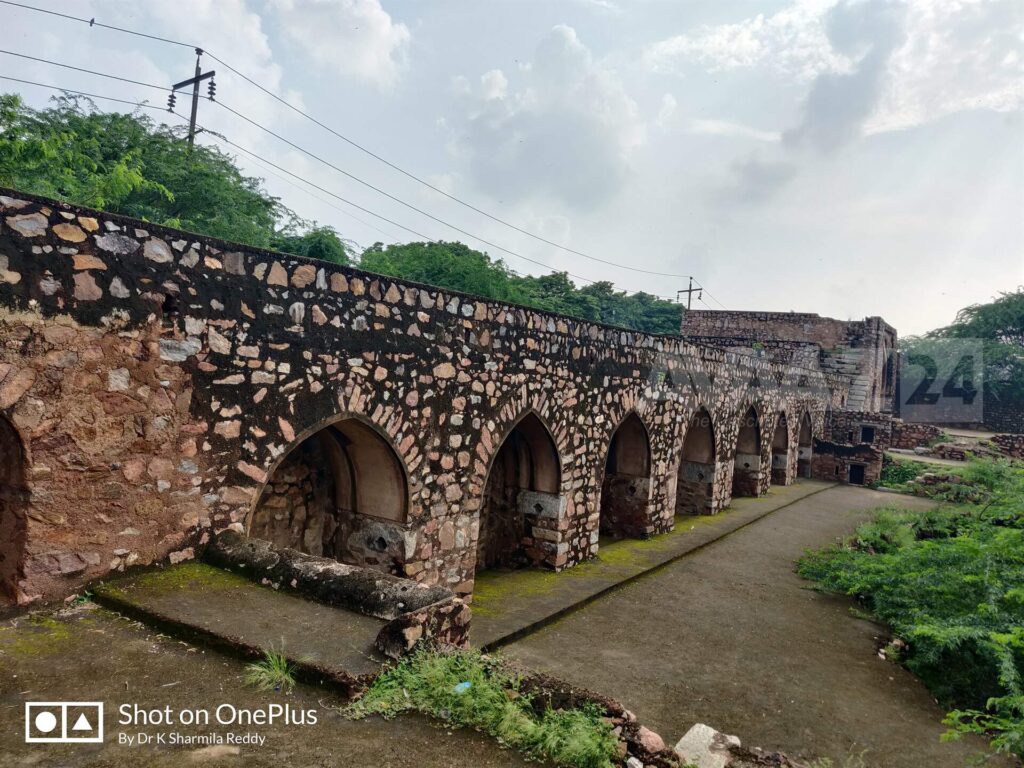
Not only irrigation, the dam also provided much needed defence along the eastern wall, protecting the southern part of newly built Jahanpanah city.
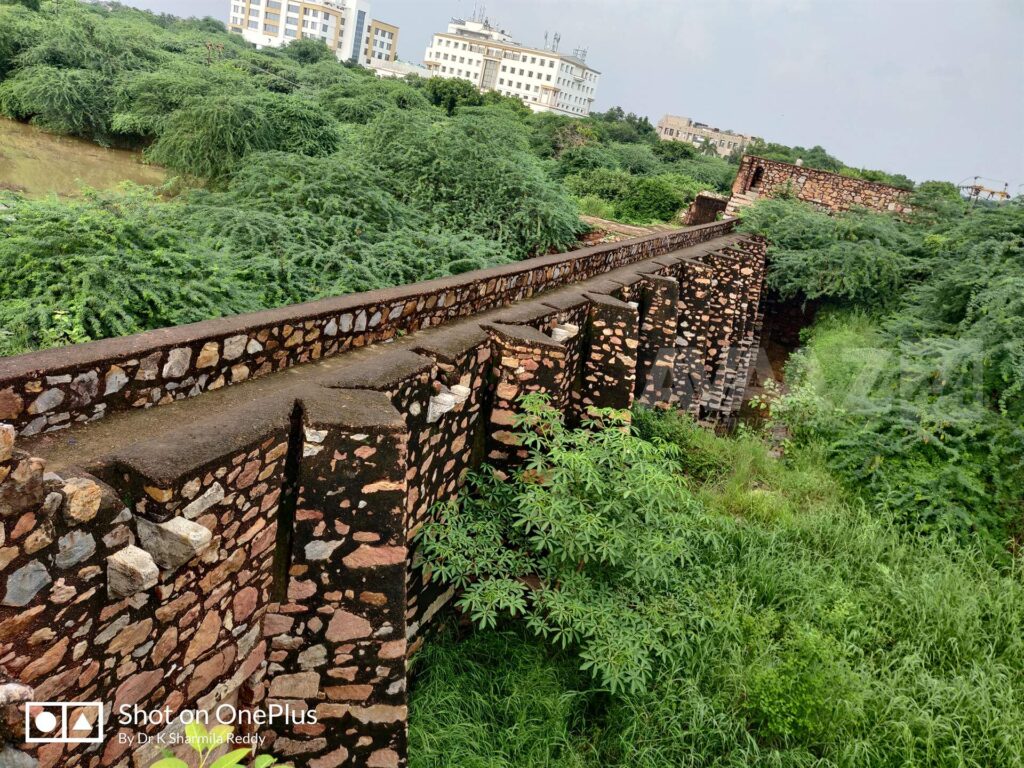
Architecture of Satpula
Satpula is a complex two-storeyed sluiced dam with flanking towers on either side. It is built in rubble masonry.
![Site plan of Satpula [pic from The Tughluqs: Master builders of the Delhi Sultanate of Anthony Welch and Howard Crane]](https://avaaz24.com/wp-content/uploads/2021/08/6-sp-1024x821.jpg)
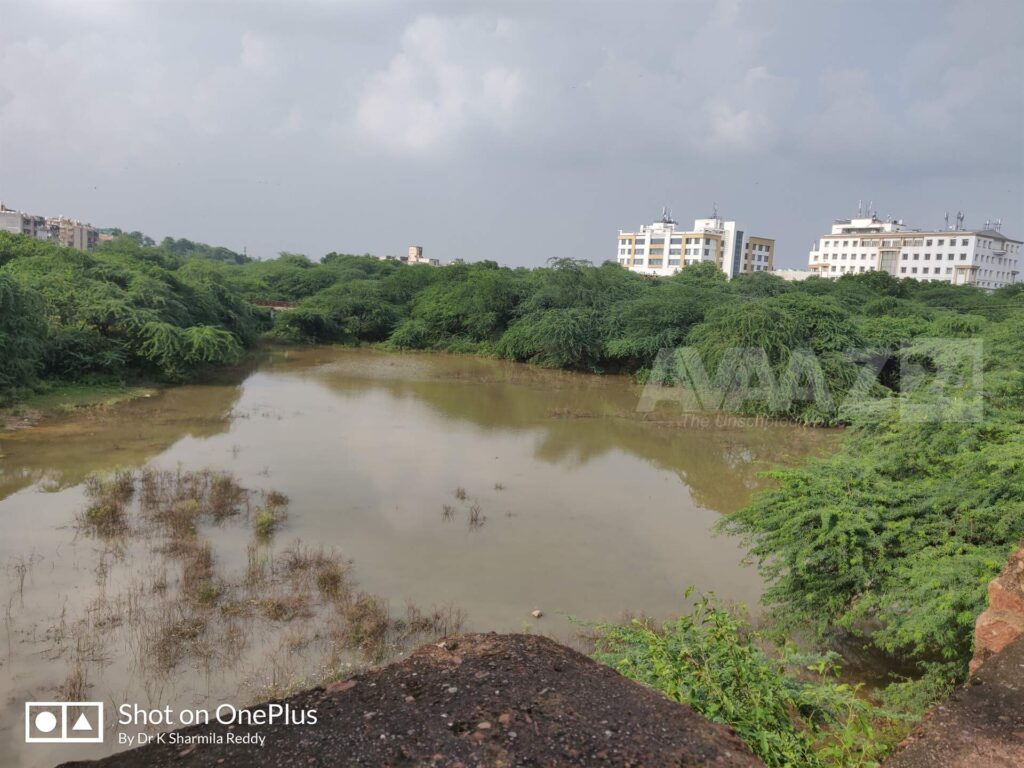
The total width of Satpula is 255 feet. The bund is 177 feet long and each of its two flanking towers are of 39 feet wide.
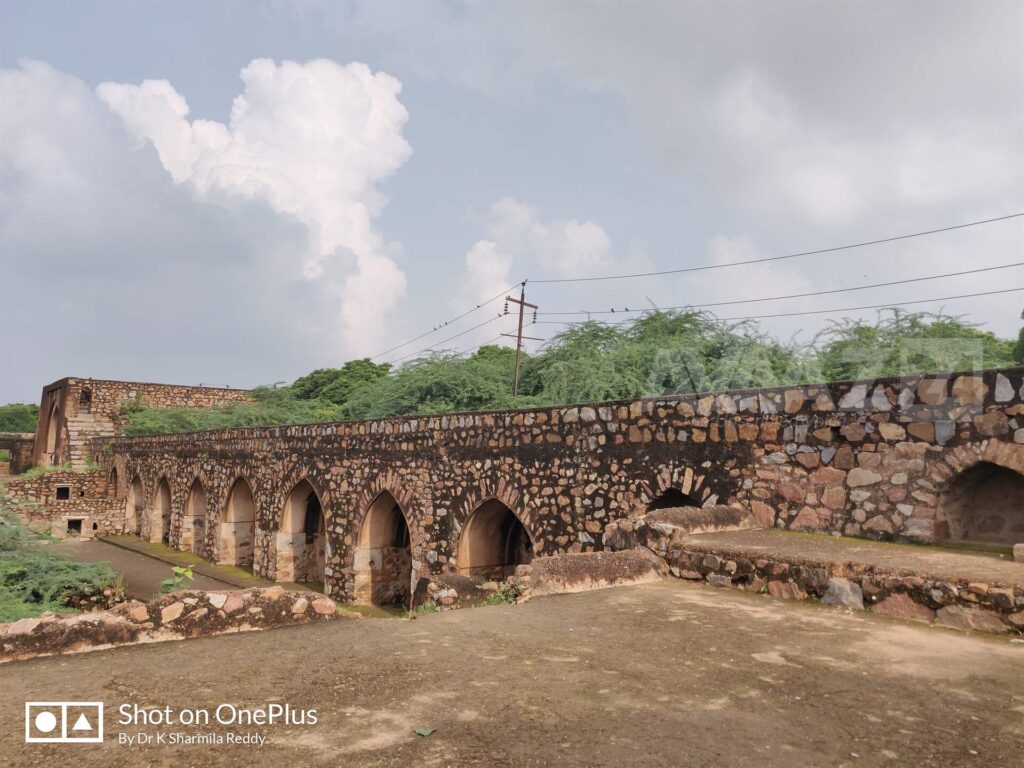
Lower Level:
The massive lower story of the weir wall contains 11 barrel-vaulted openings with sluices running across its entire depth in the north-south direction.
The arched openings are located at different levels, with seven principal spans (arched openings) at the lowest level. The balance two additional bays on each bank, are at a higher level on the east and the west.

Out of the eleven arches, the three central ones are 11 feet wide and the rest are 9 feet wide.
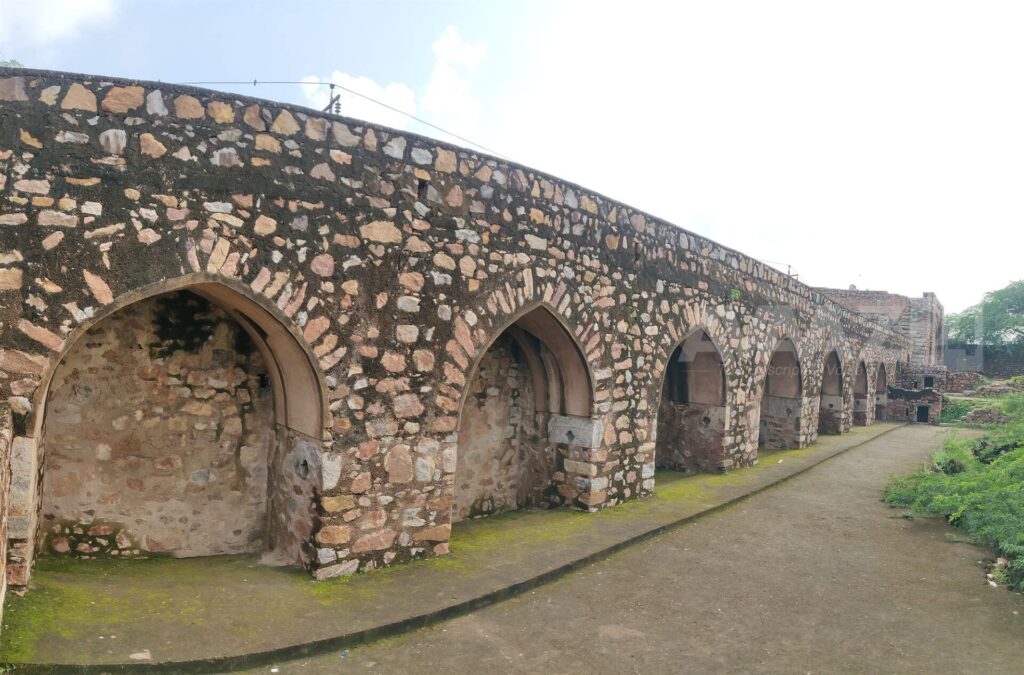
During the dry season, when the artificial lake to the south would be dry and the walls subject to possible attack. Therefore, the seven main arched gates originally held sliding wooden sluices to shut the tunnels. You can still see the grooves in the side walls of each gate where these would have fitted.
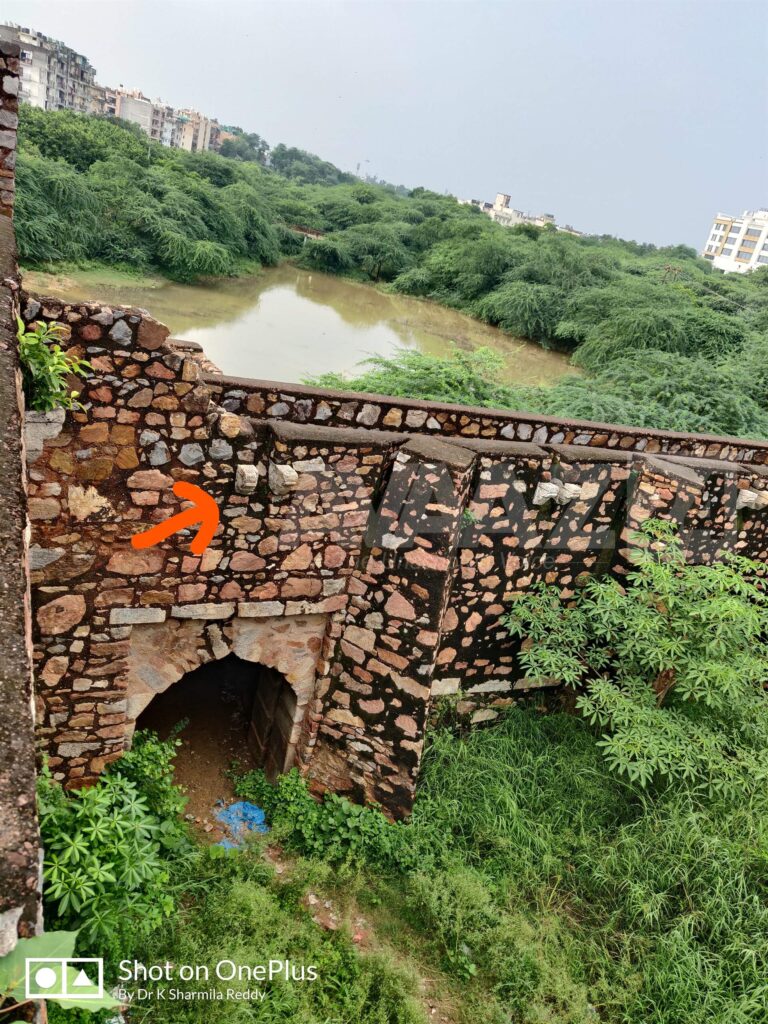
These sliding gates, thus controlled the force of the stream flowing from the south.
When in use, the gate system was controlled through a rope and pulley arrangement, to regulate the flow of water.
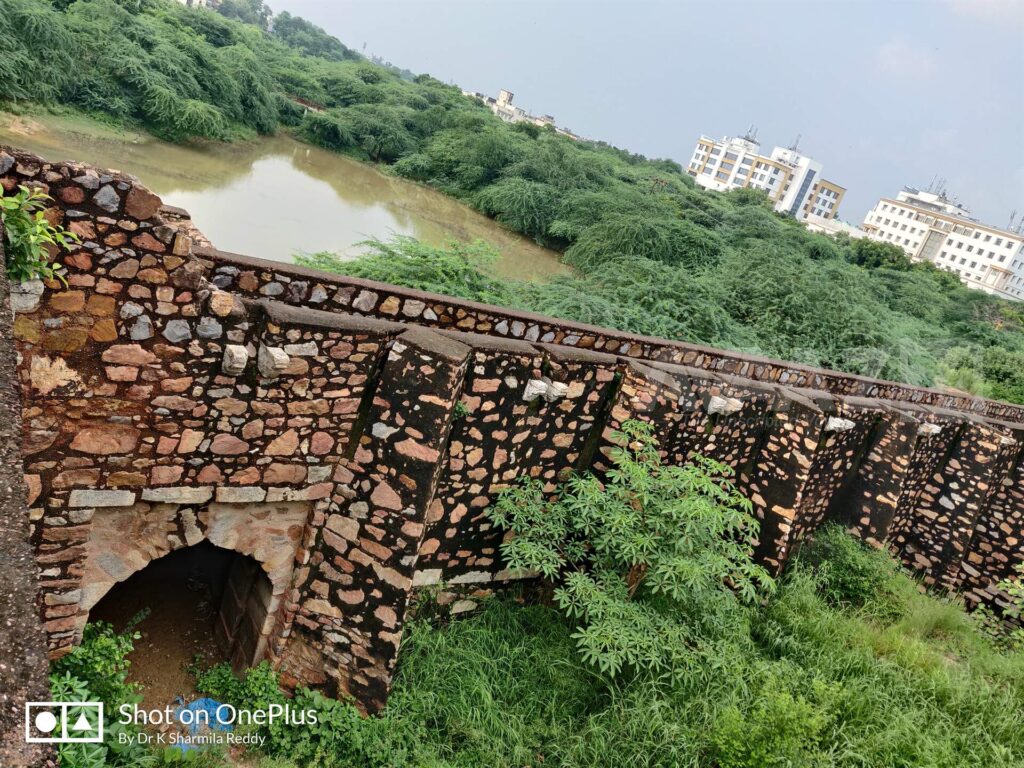
Except for the sluice openings the lower story is completely solid. Today, much of the lower storey is damaged.

Upper Level:
The second level has seven sluice bays which form an arched corridor. On a level with the ground and on either sides of arched bund, there contain a narrow staircase leading to the top of the bridge and continuing up to the roof of the tower.

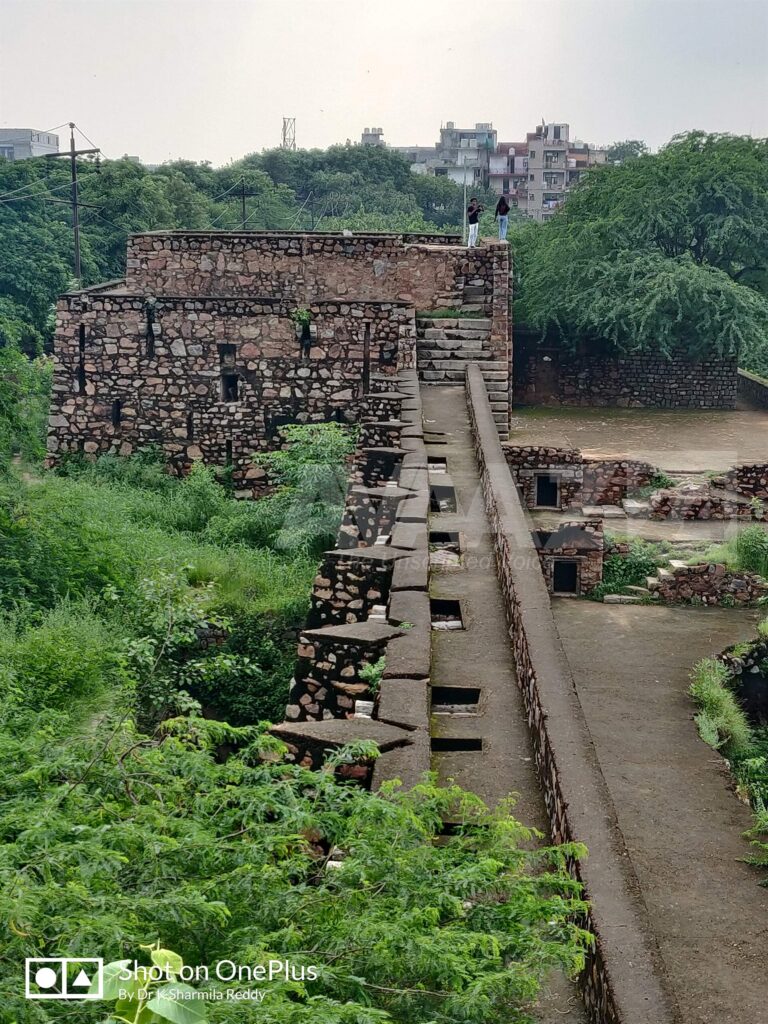
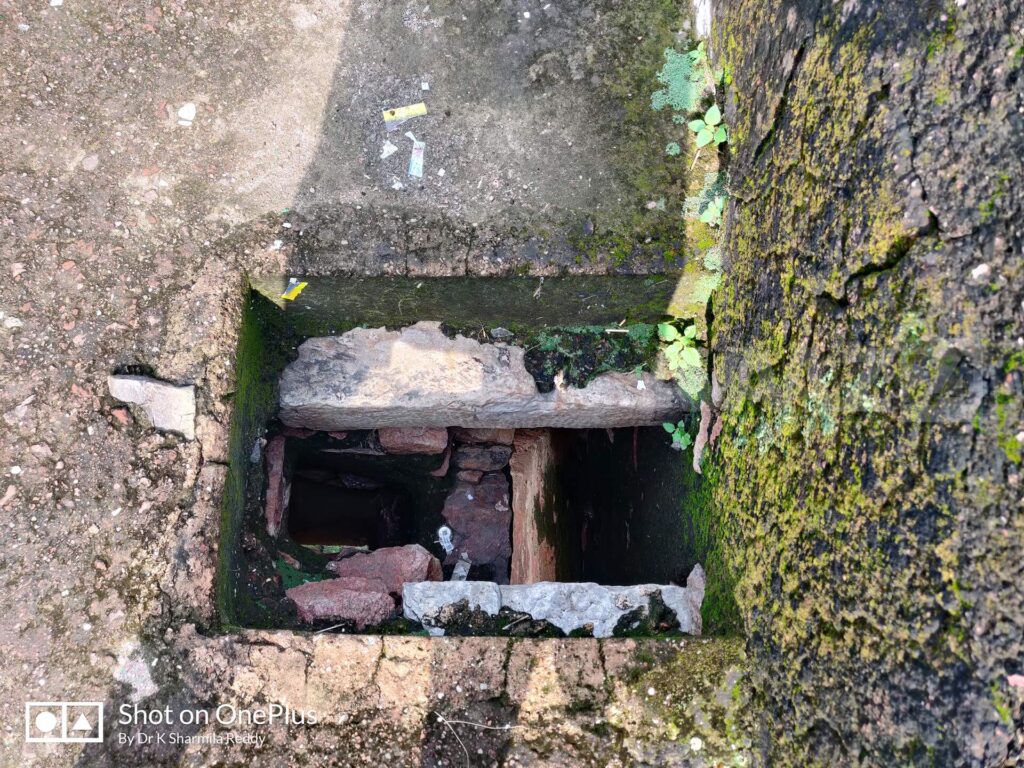
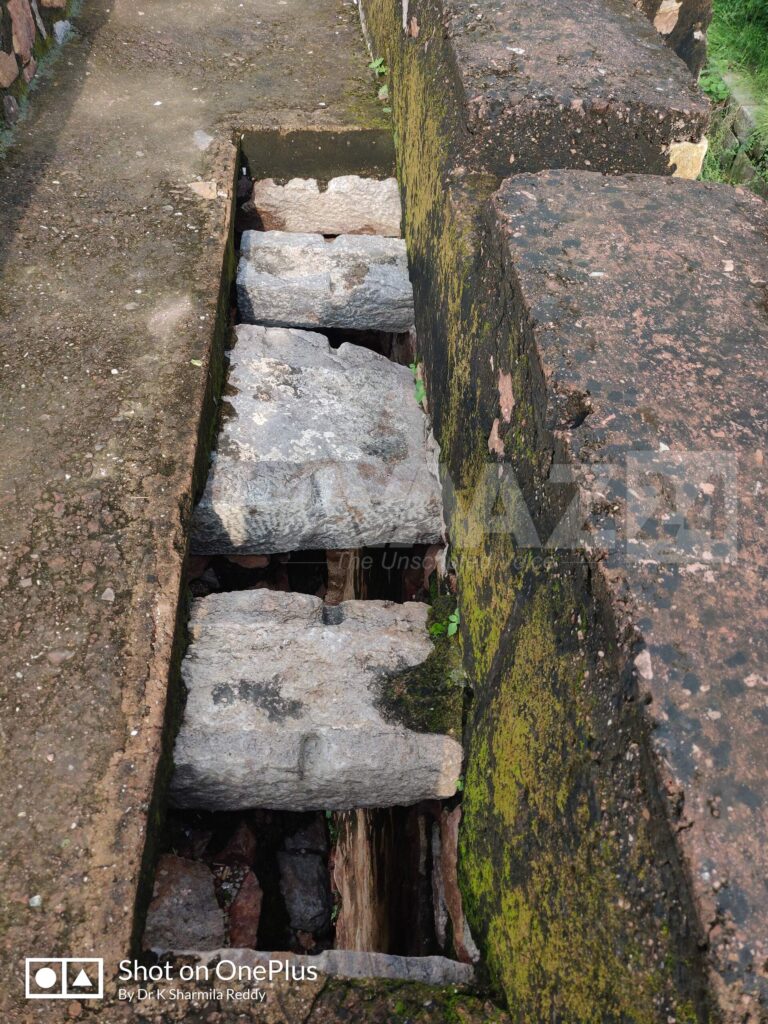
Towers- square bastions:
Satpula has a flanking tower facing north at each end. They have the appearance of Pathan gateways.
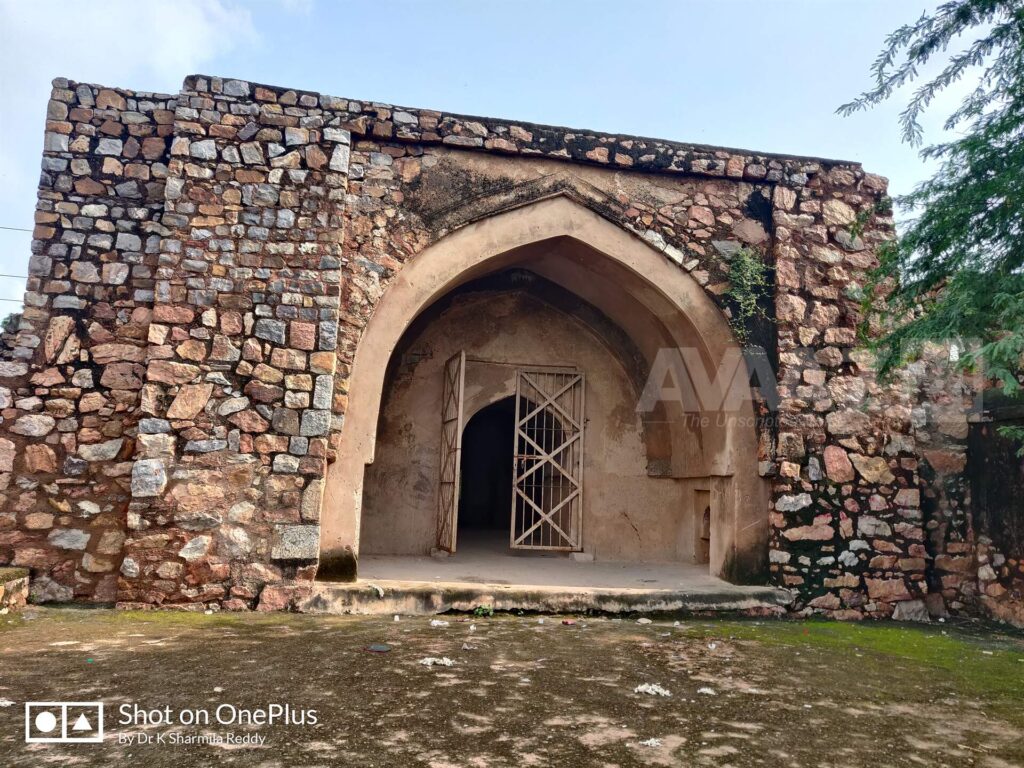

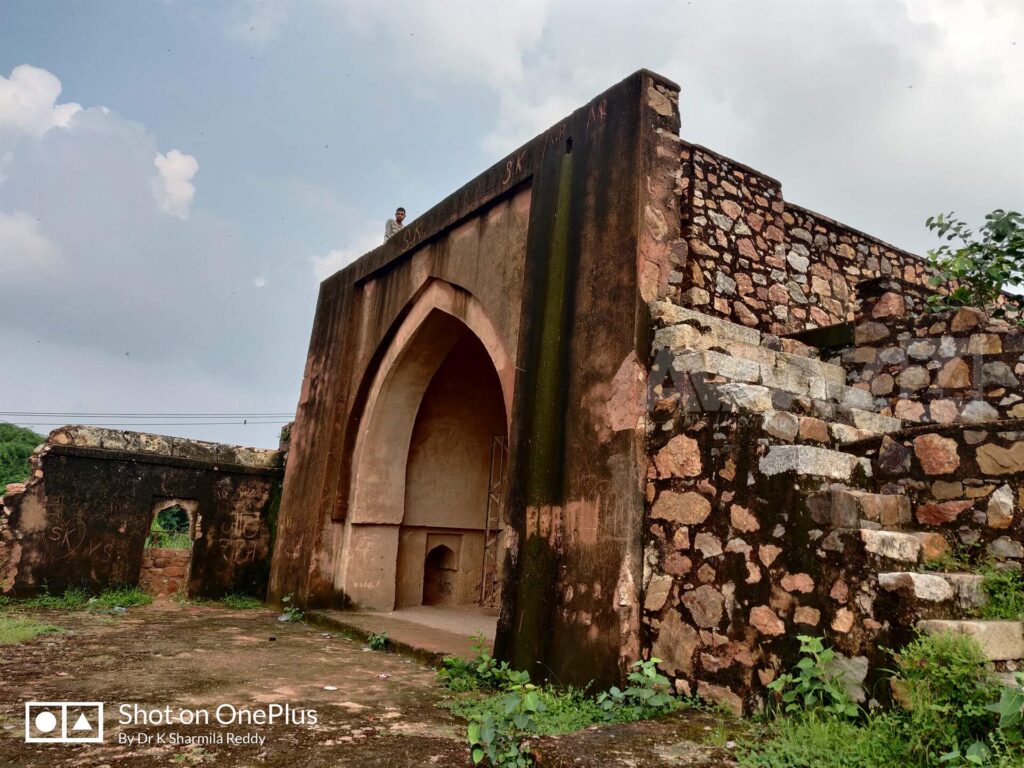
The tower’s archway leads into a vaulted vestibule-like space with a small arched niche on either side.
To the south of this vestibule an arched doorway leads into an inner room. Scholars have often described this room as octagonal and 5.97 meters (19.5 feet) in diameter.
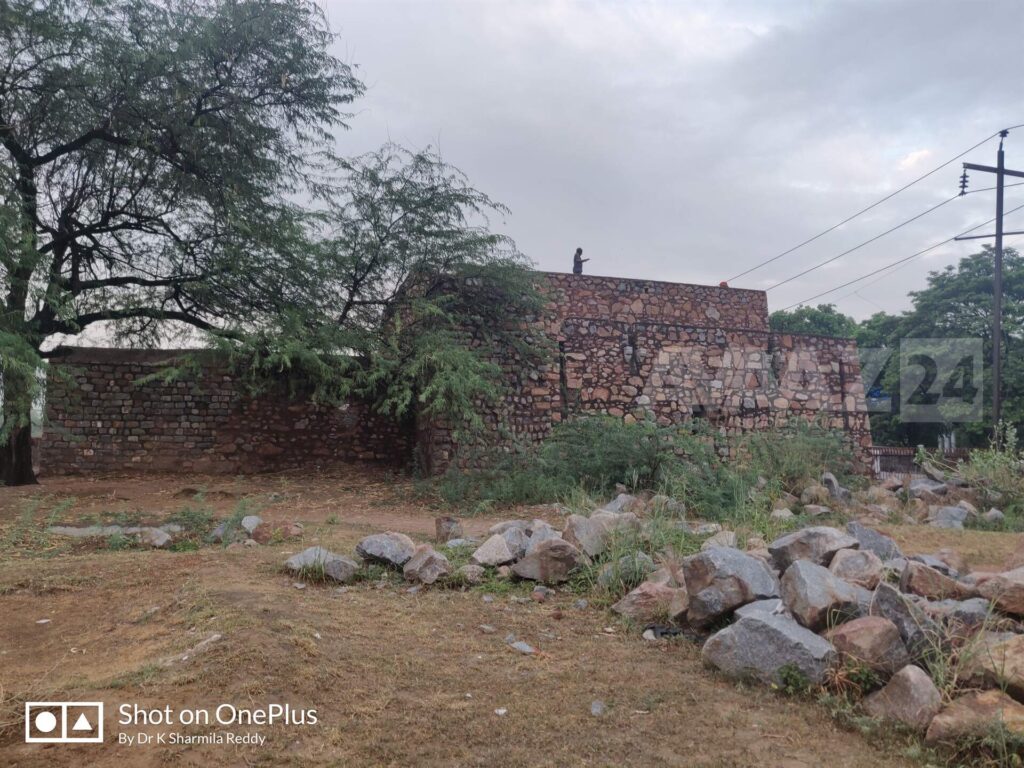
But this room is actually a square. Each of its four corners led into small circular rooms. They are probably designed for the dam’s maintenance crew and for guards protecting the walls.
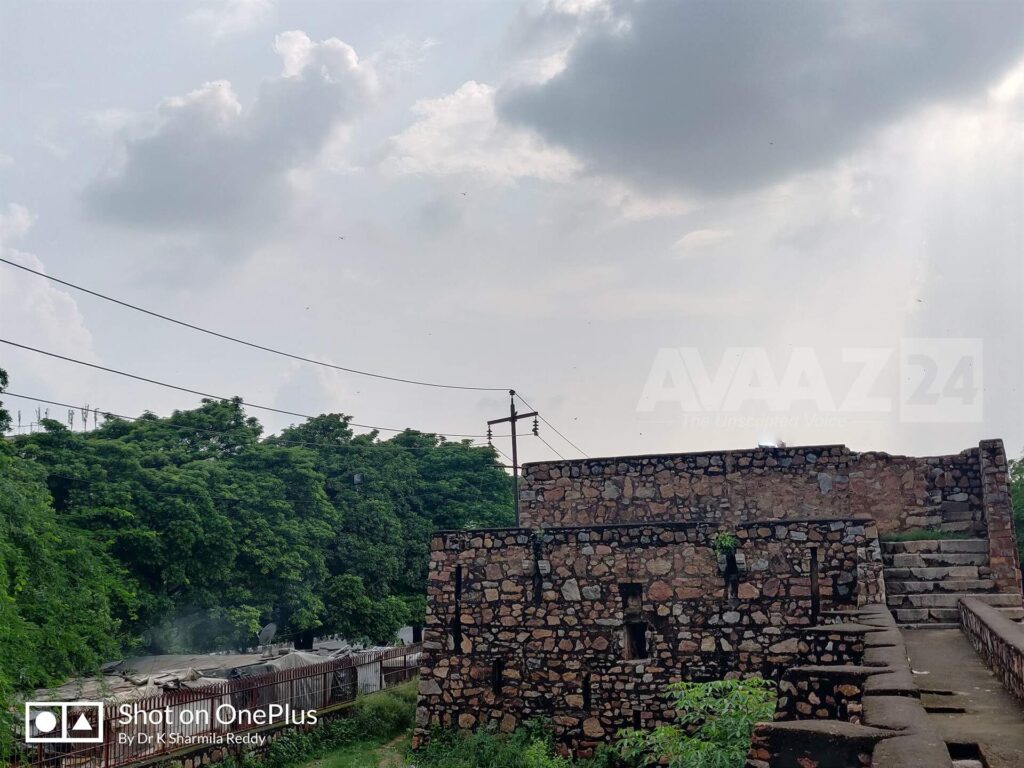
The walls of this square room has a number of tall narrow slit-like openings at various levels and directions. These openings are for the archers. Thus it functioned like a bastion.

Restoration:
The bridge was once damaged by the flood. Following the flood, a rubble wall is erected to its south. It serves as a band and protects from damage. [Reference: List of Muhammadan and Hindu Monuments– volume III- Mahrauli Zail- 1922]
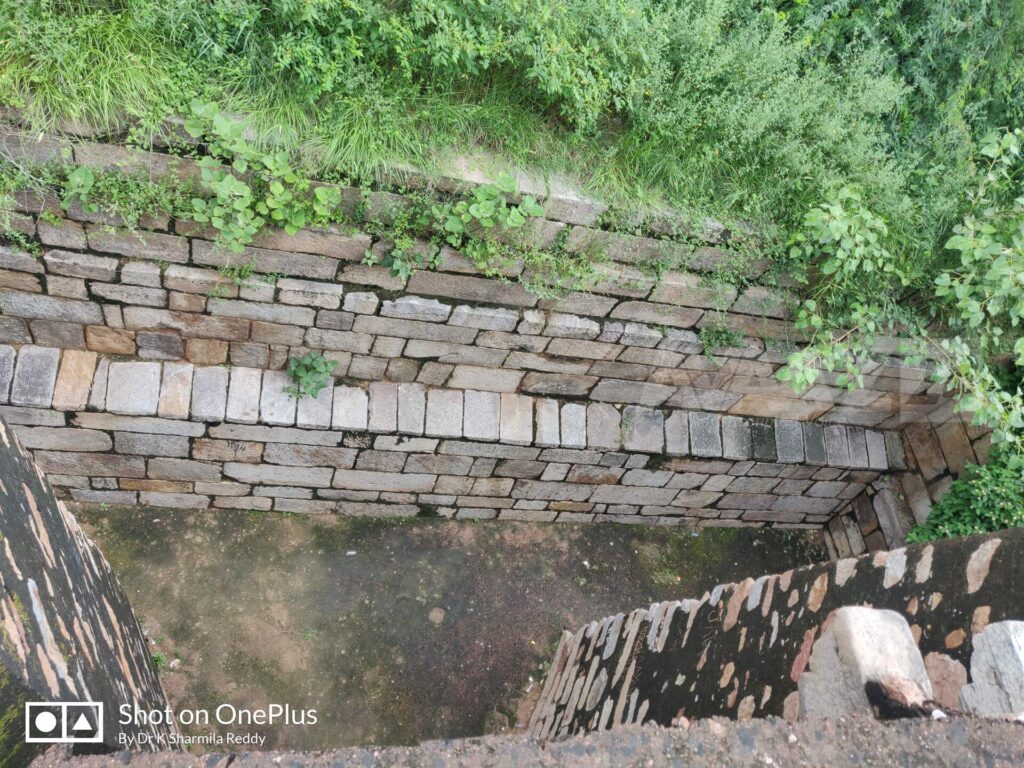
Purpose of Satpula:
- The dam regulated the impounded waters.
- It provided irrigation to the fields and gardens located in the south of Jahanpanah city.

- In its time, the towers of Satpula were occupied by a local maktab or school. Thus, it served as Madrasa.
- Square shaped bastions (the towers) of Satpula provided defence security to the city against attacking armies.

Cultural significance of Satpula:
According to Maulvi Bashir-ud-din Ahmad, Sufi Saint Nasir-ud-din Mahmud Chirag Dehlavi (Roshan Chirag-i Dilli) once performed Wudu (the ritual ablutions prior to Namaz) in the waters of Satpula. Consequently, the waters are accredited with various healing propensities. From then, locals consider the water as sacred owing to its curative powers.
[Reference- Waqeyaat-e-Daar-ul-Hukumat Delhi (Events in the capital city of Delhi)]

During Muhammad bin Tughlaq’s reign Tri- weekly fairs are held at Satpula in the month of October viz., on Sundays, Tuesdays and Saturdays till the celebration of the festival of Diwali. [Reference- The Archeology and Monumental Remains of Delhi by Carr Stephen 1876]
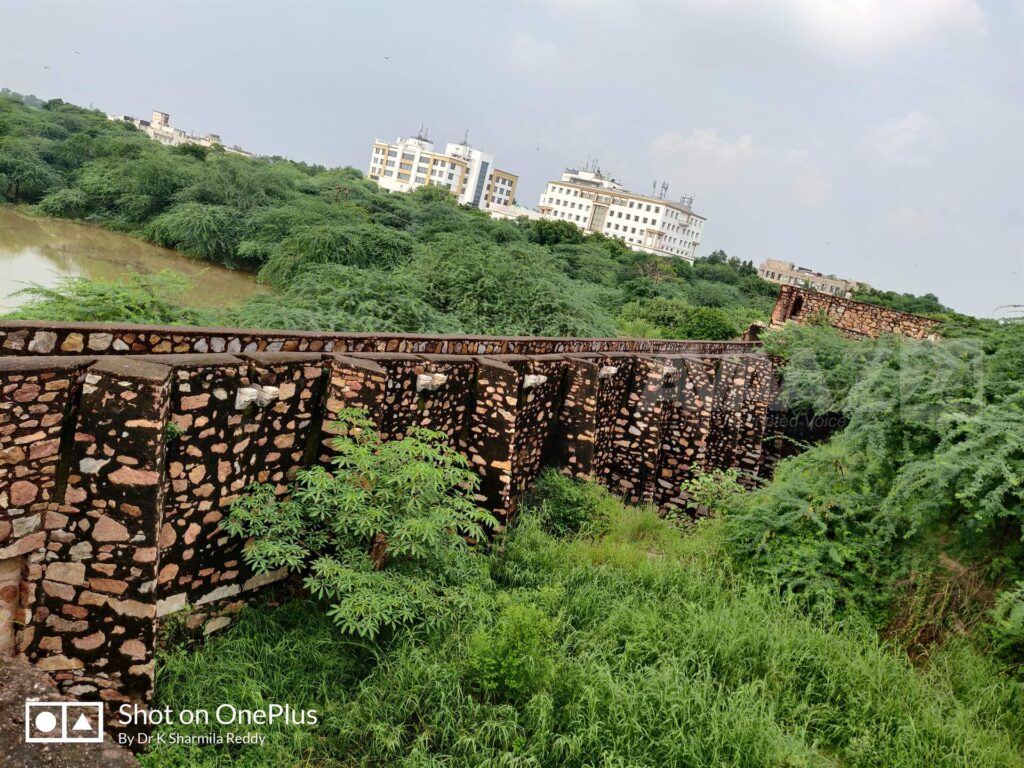
Lastly, another popular Sufi saint Sheikh Yusuf Qattal, who lived during the reigns of Sultan Ibrahim Lodi (1517-1526) and Badshah Zahiruddin Muhammad Babur (1526-1530) is believed to have performed religious devotions at this Satpula.
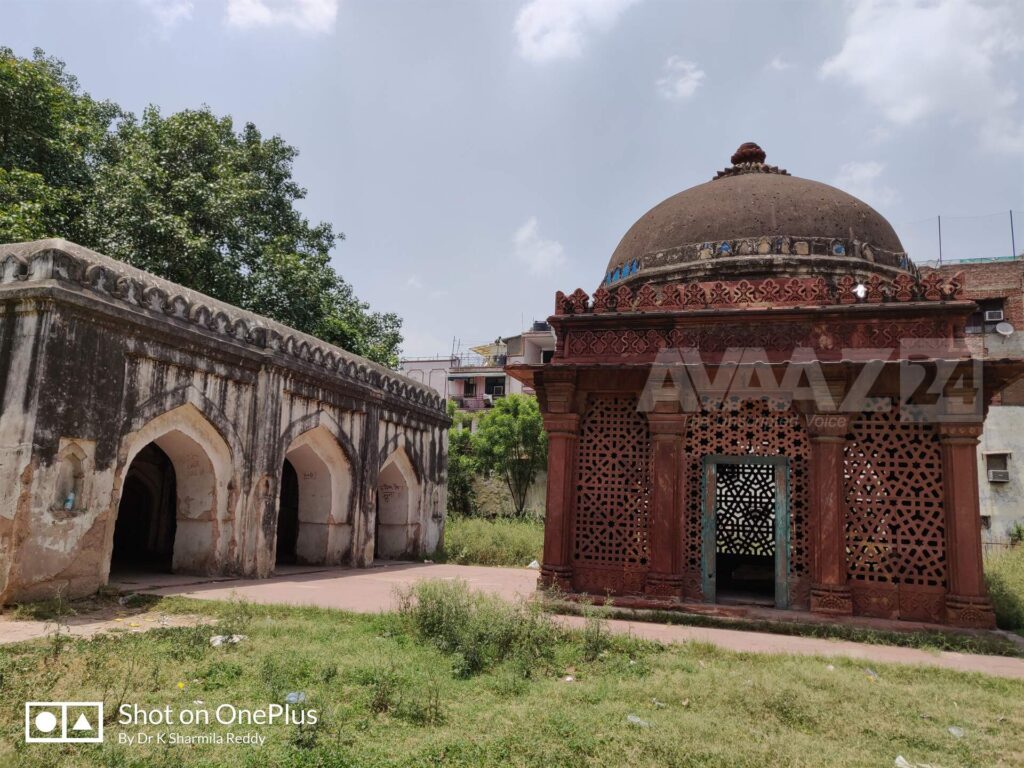
Let’s read about Yusuf Qattal in the consequent articles of this Classic India series.
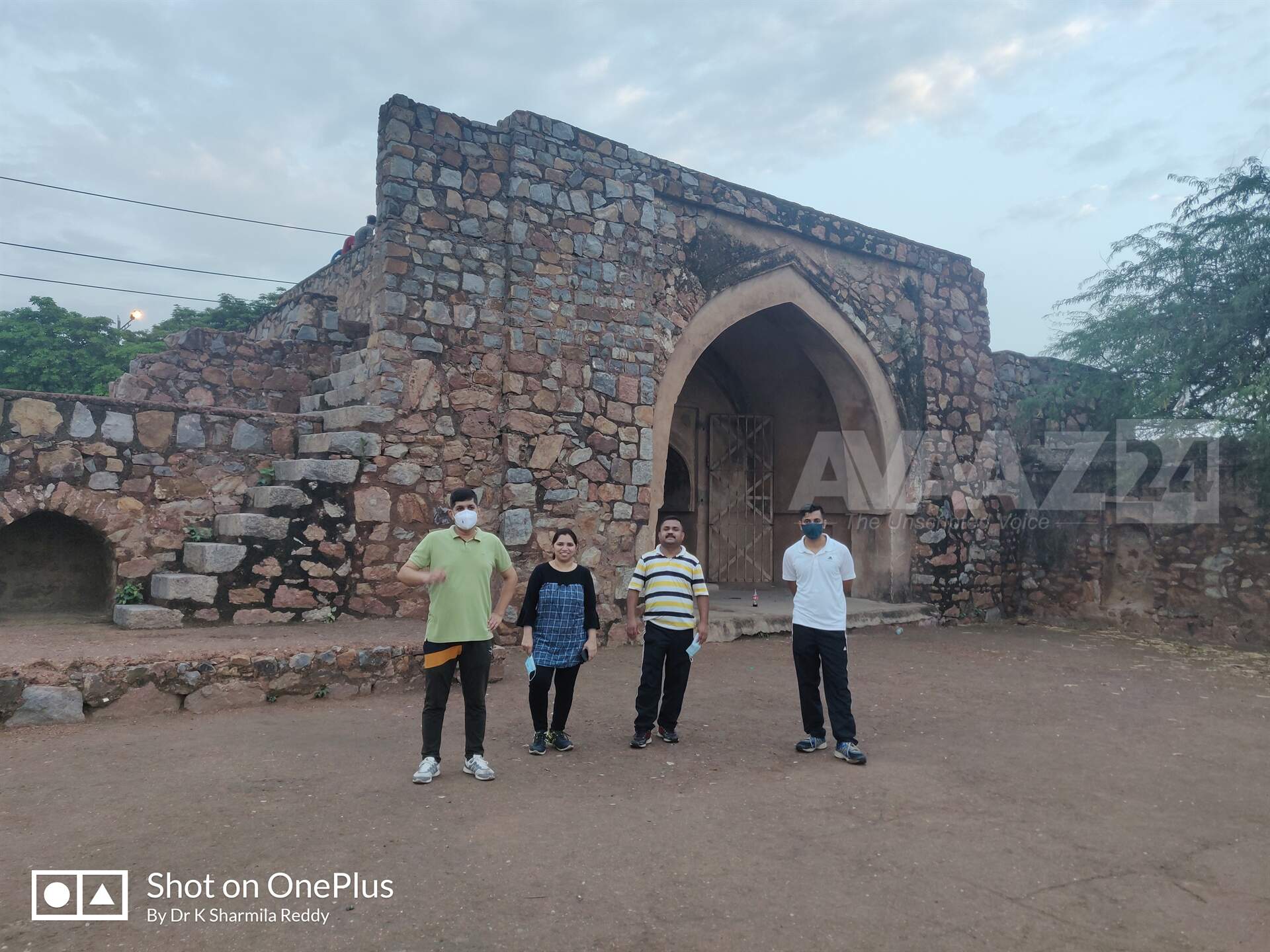
Modern Day Significance of Satpula
Satpula is a fine example of Tughlaq engineering. It marked great improvements in local irrigation technology. To understand the history of water management in the Delhi region, Satpula must be absolutely studied.
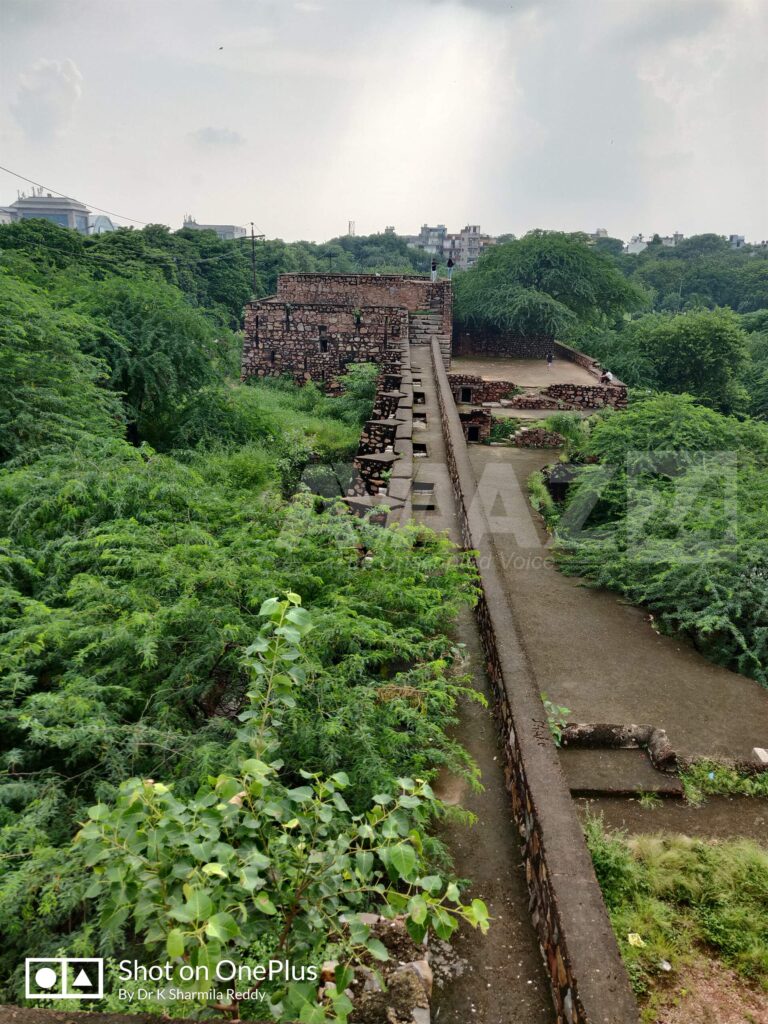
Although, Satpula is a part of ASI list of “Protected Monuments”, it is under gross neglect today. To begin with, thorny weeds have grown all around the dam and in the reservoir. The main gate remains permanently locked. In short, a transverse slit in the gate provides us space to enter inside.
Weeds have grown all around the metal tablet of ASI. You need to remove the weeds that have to see the text on the tablet.
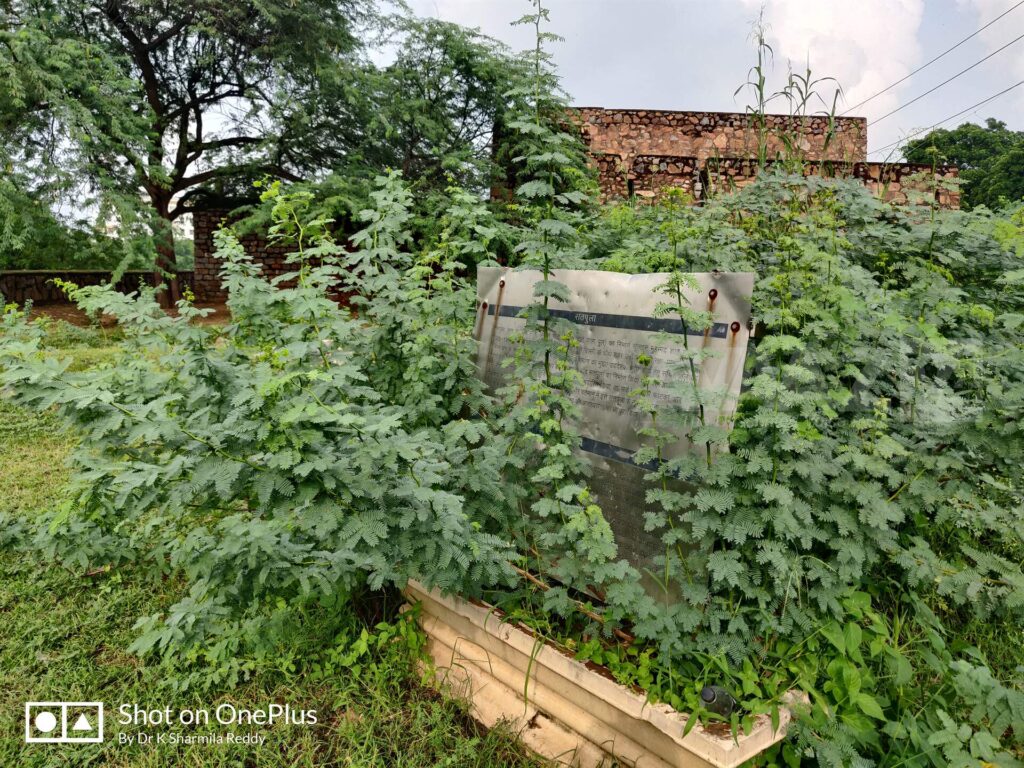
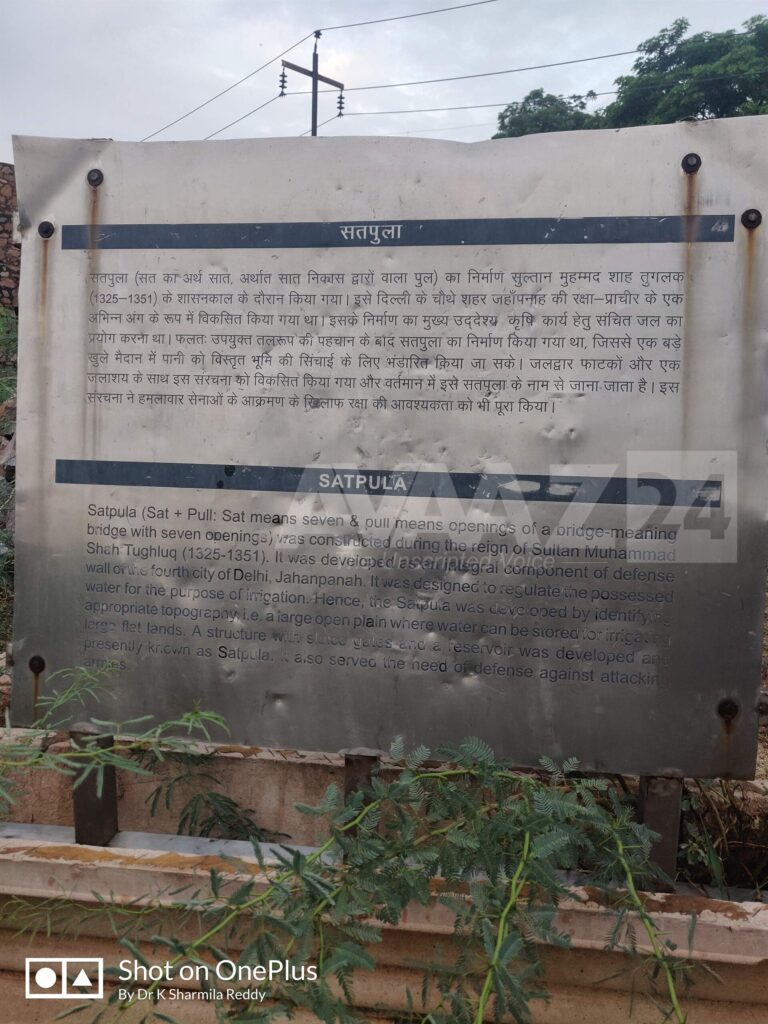
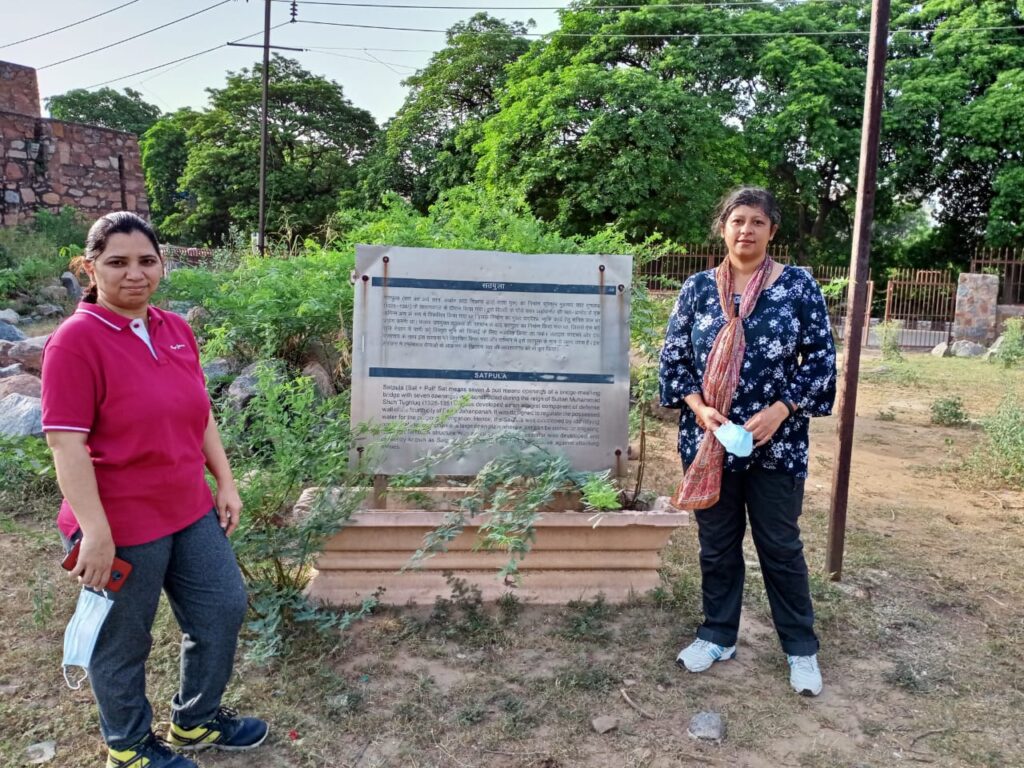
The insides of Satpula are littered with broken beer bottles, plastic cups and empty packs of salted snacks. Youth are spotted having liquor parties and hurting the sanctity of the monument.


